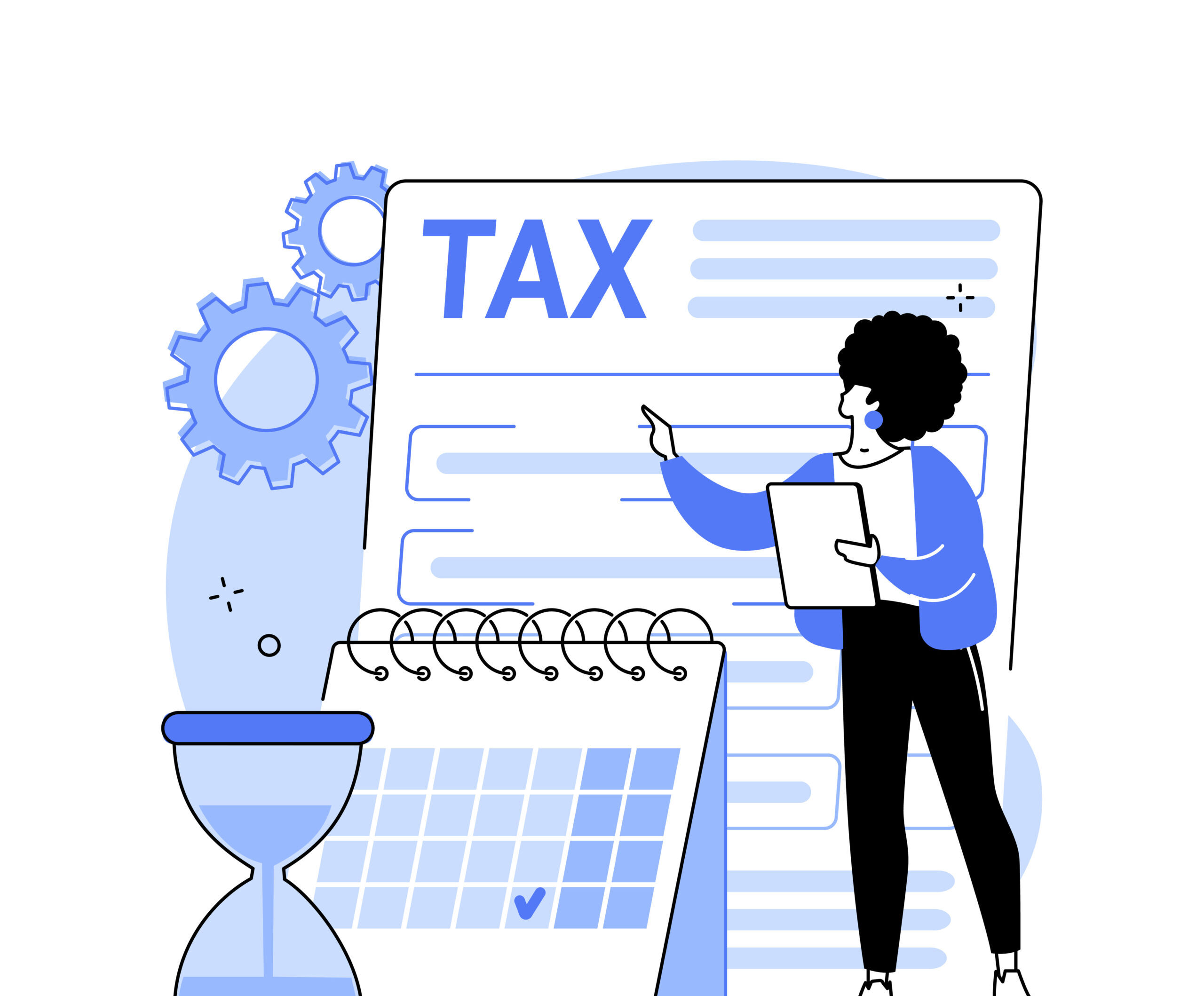Navigate tax season with these resources for accountants
Explore 3 key resources designed to help accountants this tax season
Tax and Accounting professionals, listen up! Aren’t you tired of spending countless hours pouring through textbooks and internet searches trying to find the latest tax laws? And then having to decipher them into easy-to-understand nuggets that work for your clients? Enter: Thomson Reuters Tax Season Toolkit. This one-stop-shop can help make life easier by providing comprehensive resources so you can stay ahead of the game in today’s ever-changing world of tax and accounting.
Breeze through tax season with ease
It can be quite overwhelming thinking about navigating your way through all the possible deductions, exemptions, credits, and other important information related to filing taxes for individuals. In this post, we will highlight 3 of our top resources included in our Tax Season Toolkit: Year-End Tax Planning for individuals and businesses, How APIs can help transform your practice, and a Case Study detailing how GoSystem Tax RS and GoFileRoom helped a firm. Breeze through tax season easily with our comprehensive year-end tax season toolkit.
1. Year-end tax planning
Individuals
What’s new for individuals for the 2022 tax season?
• Many of the tax benefits related to the COVID-19 pandemic have expired or reverted to their pre-pandemic levels.
• Expanded health insurance subsidies are extended through 2025.
• Both the child tax credit and the child and dependent care credit revert to pre-pandemic levels.
Filing status and dependents
When recommending year-end tax planning strategies, review the taxpayer’s expected filing status this year and next and the number of dependents the taxpayer expects to claim each year.
What’s new?
• The following individual credits have changed: The CTC reverts to $2,000 and the old phase-out applies.
• The age of a qualifying child decreases to under the age of 17
• The child and dependent care credit revert to its pre-pandemic amount.
• The exclusion from income for employer-provided dependent care assistance also decreases to pre-pandemic levels.
Increasing and decreasing AGI
For individuals, year-end tax planning commonly involves methods for increasing and decreasing AGI. Generally, taxpayers will aim to decrease AGI to reduce their overall tax liability. But, there are some instances when it will make sense for the taxpayer to increase AGI in a particular tax year.
What’s new?
The contribution amounts and carryover periods for unused amounts in a health flexible spending arrangement (health FSA) and dependent care (DC) FSAs have changed as follows:
• For plan years ending in 2022, the contribution limit for health FSAs is $2,850.• The maximum health FSAs may allow participants to carry over to 2023 is reduced to $570.
• Carried-over funds must be used in the first 2½ months of 2023.
• The contribution limit for dependent care FSAs drops back from $10,500 to $5,000 ($2,500 for separate filers).
Education
Taxpayers who are paying or saving for their own or their dependents’ education have several opportunities to maximize education-related tax benefits before year-end.
What’s new?
• For tax years 2021-2025, many public and private student loan discharges are excluded from gross income.
Businesses
What’s new for businesses in the 2022 tax season?
Congress passed the Inflation Reduction Act of 2022 which extends, through 2024, the credit for electricity produced from certain renewable resources; the energy credit; and other energy-related credits (with various extension dates)
The Act also introduces two new corporate taxes and various new clean energy-related tax credits. But these will not go into effect until 2023. The two corporate taxes are: (a) the 15% corporate alternative minimum tax on the adjusted financial statement income of applicable corporations (sometimes referred to as the “Book Minimum Tax”) and (b) the 1% excise tax on the repurchase of the corporate stock.
Depreciation and expensing
Acquiring qualifying property and placing it into service before year-end can result in a full expensing or bonus depreciation deduction for 2022. However, there are many considerations when planning year-end purchases. An important one is the possibility of increased tax rates next year, which may make deferring deductions more beneficial.
What’s new?
For 2022, the maximum amount of section 179 property that can be expensed is $1,080,000. That full amount is available until the qualifying property placed in service during the year reaches $2,700,000, at which point a phase-out begins.
The 100% bonus depreciation stays in effect until January 1, 2023. At that point, the first-year bonus depreciation deduction decreases as follows:
• 80% for property placed in service during 2023
• 60% for property placed in service during 2024
• 40% for property placed in service during 2025
• 20% for property placed in service during 2026
Business interest deductions
The Internal Revenue Code limits the deduction of business interest expenses. The deduction limit on business interest doesn’t apply to businesses with 3-year average gross receipts of $27 million or less for 2022 ($29 million or less for 2023). The limitation also does not apply to deductions for interest paid by vehicle dealers on carried inventory. In addition, some real estate related businesses can opt out of the limitation, if they forego accelerated depreciation. Interest that can’t be deducted due to the limitation is carried forward indefinitely.
What’s new?
• Two changes made by the Tax Cuts and Jobs Act became effective on January 1, 2022. First, businesses are required to amortize research and development expenses over a five-year period. Second, the limitation on business net interest deduction is reduced to 30% of earnings before interest and taxes (EBIT) instead of earnings before interest, taxes, depreciation, and amortization (EBITDA).
Practice Aides
Extenders and expiring provisions 2022
Provisions extended through December 31, 2024, via the Inflation Reduction Act of 2022:
• Credit for electricity produced from certain renewable resources
• Energy credit
• Other energy-related credits (with various extension dates)
Provisions recently extended through December 31, 2025:
• CARES Act exclusion for employer payments of student loans
• Exclusion for canceled mortgage debt
• New Markets Tax Credit
• Work Opportunity Credit
• Empowerment Zone Tax Incentives
• Employer Credit for paid family and medical leave
Provisions recently made permanent:
• 7.5% floor for the medical expense deduction
• Exclusion of benefits for volunteer firefighters and emergency medical responders
• Business tax extender provisions
• Credit for certain expenditures for maintaining railroad tracks
2. Three Benefits of APIs
There are significant benefits to be gained when firms have the flexibility to connect the dots across systems via APIs. The reality is that when data is siloed in separate applications and disconnected systems, or if you’re dependent on manual processes to enter and aggregate it, your firm is likely missing out on opportunities to leverage it between various tools and users. Let’s take a closer look.
1. Drive greater efficiencies
• Integrate with existing business systems to reduce manual data manipulation and streamline your tax workflows.
• Reduce internal controls risks that come with the manual upload and download of data files.
• Use the same data across multiple solutions, meaning you only import once — saving you input time.
• Export data to be used by your partners or in-house analytics team for additional analysis.
2. Bolster your firm’s advisory opportunities
• a recent survey from the Thomson Reuters Institute found that 95 percent of tax professionals believe their clients want business advisory services
• Firms can then focus more energy on delivering clients higher-value, higher-margin advisory services that will increase client satisfaction and ultimately boosting profitability.
3. Differentiate through specialization
• Targeting a specific niche or vertical enables firms to differentiate from the competition
• Leveraging APIs can help firms more efficiently meet the unique needs of those clients.
• Effectively using APIs can cut costs, drive greater efficiencies, and help boost the bottom line, and the impacts of APIs on firm leads, as well as tech staff, should not be overlooked.
3. The best service requires the best technology
• Andersen Tax has a long history of providing best-in-class services and consultation to clients, with 950 employees and several international offices.
• John Bartlett, manager of technology at Andersen Tax, focused on finding ways to make his staff’s jobs easier and more efficient by utilizing the perfect tools for the job.
• GoSystem Tax RS was selected due to its ability to provide practitioners with access to information anywhere in the world at any moment while maintaining secure software that can be continuously updated.
• The addition of GoFileRoom combined with Thomson Reuters’ future-focused development focus has made a big impact for them in terms of increased profitability and improved processes.
• Thomson Reuters’ future-focused development focus has made a huge impact on Andersen Tax.
• These solutions have allowed Andersen Tax employees to work remotely with improved efficiency, resulting in faster processing times and increased profitability.
Tax season can be overwhelming and intimidating. Make life easier and help you stay ahead of the game with the Tax Season Toolkit. This one-stop-shop provides an abundance of valuable resources to guide us through financial planning, taxes, compliance, accounting, and more. So, no matter how complex you think things may get this tax season, remember that you’ve got a reliable source to advise you every step of the way. Don’t be left in the dark – take control of your finances and look out for your best interests with the help of the Thomson Reuters Tax Season Toolkit.






